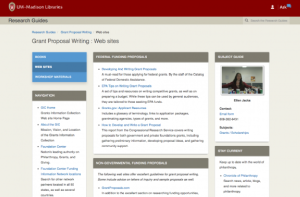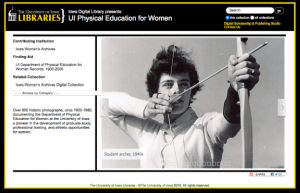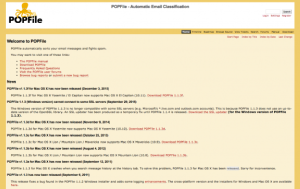 |
September 16, 2016 Volume 22, Number 36 |
Research and Education |
General Interest |
Network Tools |
In the News |
Research and EducationBack to Top | |
 |
|
 |
|
 |
|
 |
|
 |
|
 |
|
 |
|
 |
|
General InterestBack to Top | |
 |
|
 |
|
 |
|
 |
|
 |
|
 |
|
 |
|
 |
|
Network ToolsBack to Top | |
 |
|
 |
|
In the NewsBack to Top | |
Uber Pilots Self-Driving Cars in Pittsburgh, Pennsylvania | |
|
Uber's self-driving Car: Prepare to be thrilled and bored at the same time No Driver? Bring It On. How Pittsburgh Became Uber's Testing Ground The High-Stakes Race to Rid the World of Human Drivers Uber pressed to make self-driving service info public Self-driving cars and trucks could leave many jobs in the dust From 1956: A future vision of driverless cars On Wednesday, the rideshare company Uber invited frequent customers and technology writers to participate in a pilot test of the company's self-driving cars in Pittsburgh, Pennsylvania. During the pilot, each Uber vehicle is accompanied by "safety drivers" prepared to take over at any moment. Pittsburgh was selected as a pilot site for a variety of reasons. The city's challenging driving landscape, which includes numerous bridges, hills, and sharp left turns, made it an appealing location to test the safety of self-driving under a variety of adverse circumstances. Meanwhile, the state of Pennsylvania has no laws against self-driving cars, and Pittsburgh mayor, Bill Peduto, is an advocate of partnering with the company. Peduto has remarked, "You can either put up red tape or roll out the red carpet. If you want to be a 21st-century laboratory for technology, you put out the carpet." The Uber pilot has revived ongoing debate about autonomous cars. Proponents argue that this technology has the potential to greatly reduce fatalities from automobile accidents. Opponents, meanwhile, are concerned about the safety of self-driving cars and the potential impact of this technology on the labor market. [MMB] The first link takes readers to Washington Post technology reporter Brian Fong's account of participating in the Pittsburgh pilot. Next, readers will find a New York Times article by Cecilia King that explores Uber's decision to pilot this innovation in Pittsburgh. Readers interested in learning more about the development of self-driving cars will want to check out the third link, a December 2015 Atlantic article by Adrienne LaFrance. Moving on, readers will find two articles that highlight some concerns about these cars. Keith Lang of the The Detroit News reports that Consumer Watchdog has called on Uber to publically release safety information form its pilot. Meanwhile, David R. Baker and Carolyn Sand at the Seattle Times explore the potential impact of these cars on individuals who are professional drivers. Finally, readers will find a 1956 film by General Motors that imagines a future with self-driving cars. The map that appears in this film is remarkably similar to contemporary navigation maps developed by companies like Google and Apple; the singing traffic control operator is perhaps a bit less prescient. | |





